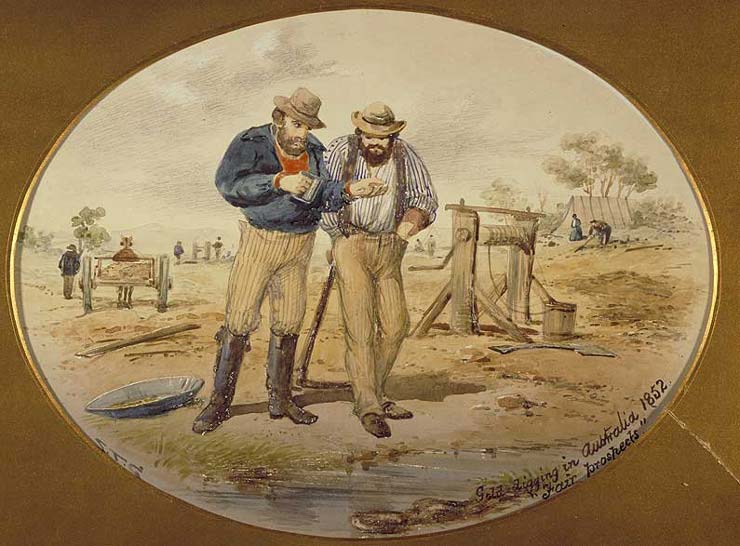 'Gold digging in Australia 1852: fair prospects'
'Gold digging in Australia 1852: fair prospects'
TLF ID R3387
This is a watercolour, the second of a pair, measuring 20.2 cm x 26.4 cm, by Samuel Thomas Gill (1818-80), a famous colonial artist. It shows two gold miners standing near a mine shaft, inspecting a handful of gold, at the edge of a creek. One of the men is leaning on a pick and a panning dish is lying on the ground nearby. Above the mine shaft is a windlass with a bucket attached. The painting has the artist's initials, 'STG', at lower left and the title: 'Gold digging in Australia 1852: fair prospects' at lower right.
